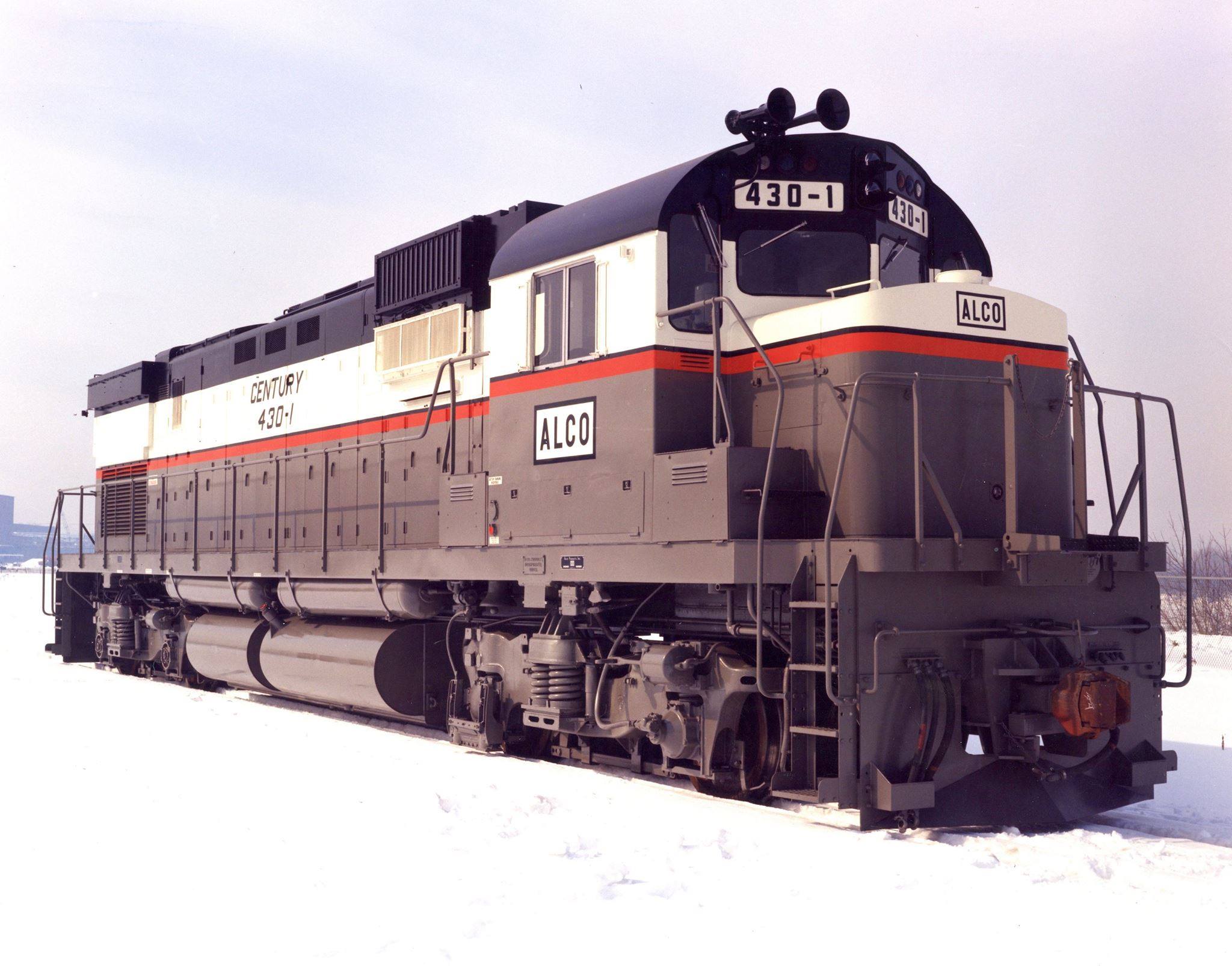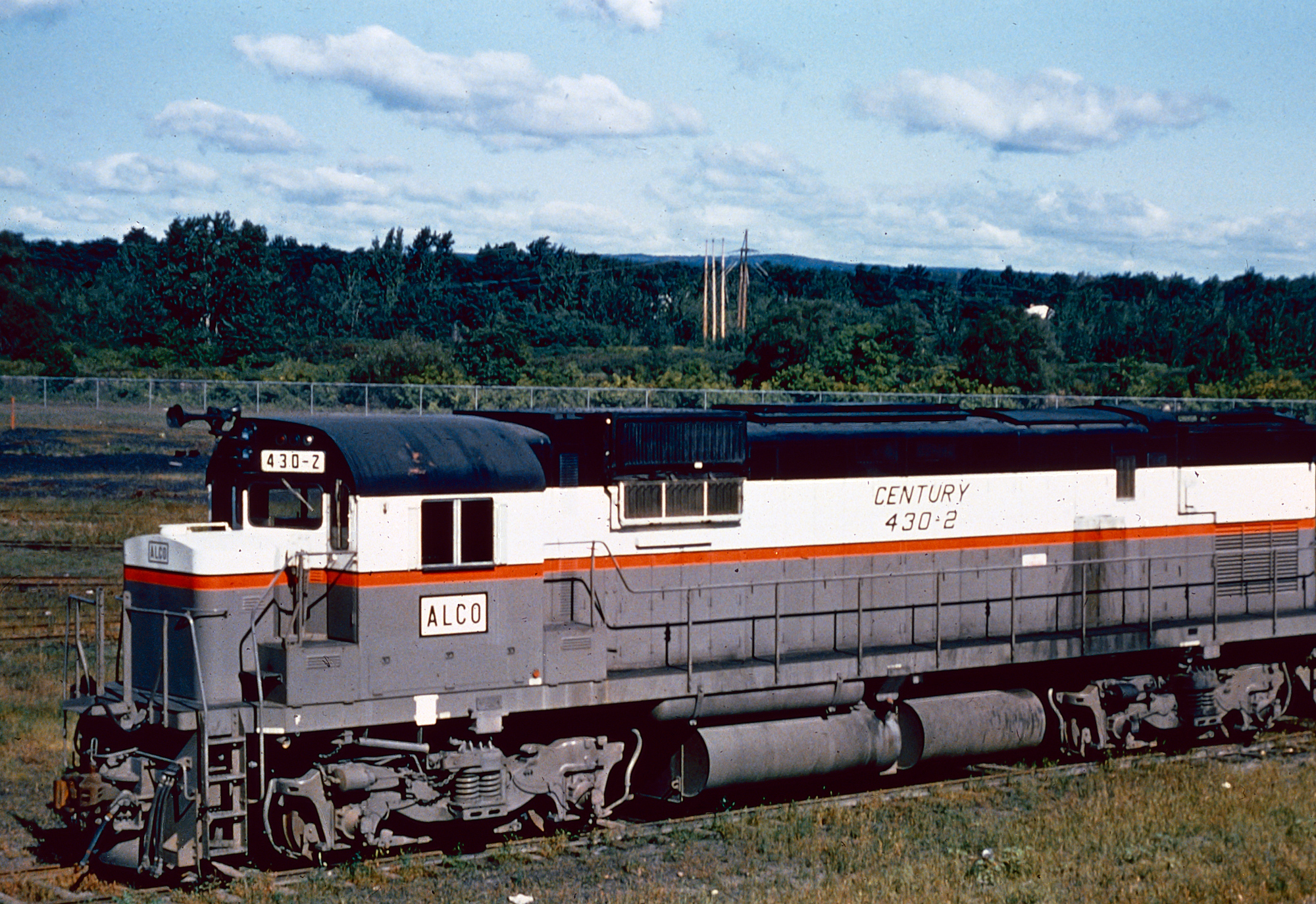Alco "C430" Locomotives: Data Sheet, Roster, Specs
Last revised: December 24, 2024
By: Adam Burns
The C430 holds the title of most powerful in its four-axle line, representing the apex of a progressive stratagem in a rapidly changing industry. However, the sands of time shifted as the twilight of the 1960s dawned, with railroad firms beginning to see the intrinsic benefits of six-axle locomotives.
These locomotives were embraced on a grand scale, leaving the avant-garde C430 vying for attention and sales. Its tale is a poignant reminder of the constant evolution of technology, and the ongoing quest to harmonize innovation with market demand.
Testing with the three demonstrators took place at several locations but, ultimately, only four railroads made purchases; Green Bay & Western, New York Central (the largest buyer), Seaboard Coast Line (which picked up the demonstrators), and the Reading.
Moreover, the C430 holds distinction as the final four-axle diesel locomotive from Alco's illustrious production line. Today, a handful of C430s remain, precious relics preserved for posterity around the nation.
Many are found in New York State. The Western New York & Pennsylvania and the Livonia, Avon & Lakeville railroad companies hold the honor of maintaining virtually half of the New York Central's entire fleet of ten C430 units, ensuring these striking machines continue to relay their gripping narrative of locomotive history. You can also find Green Bay & Western #315 at the National Railroad Museum in Green Bay, Wisconsin.
Photos
 An American Locomotive builder's photo featuring C430 demonstrator #430-1 in 1967. Warren Calloway collection.
An American Locomotive builder's photo featuring C430 demonstrator #430-1 in 1967. Warren Calloway collection.Overview
Entering production in 1966, the C430 was powered by the final model of Alco's innovative prime mover, the 251E. Capable of delivering a substantial 3,000 horsepower, this powerhouse came outfitted with prevailing attributes of the era, incorporating turbocharging and dynamic braking systems.
Contemporaneously, Alco's time-honored practice of procuring internal components, such as traction motors and generators, from former partner General Electric continued unabated.
This collaboration, however, was inherently conflicted. By the mid-1960s, it was clear GE, once an ally, had transitioned to a competitive stance, bringing forth a strategy designed to eclipse Alco in the marketplace. The course of commercial business often dances with irony, and this narrative bears that sentiment with poignant clarity.
Reception
Alco found its market share waning following the underwhelming performance of its earlier 244 prime mover. In the end, just sixteen examples of the C430 were utlimately sold.
- 10 went to New York Central
- 1 to Green Bay & Western
- 2 were sold to Reading
- The 3 Alco demonstrators (#430-1, #430-2, and #430-3) went to the Seaboard Coast Line (later acquired by the Louisville & Nashville).
By the mid-1960s railroads were finally realizing the benefits achieved through six-axle designs thanks to their increased tractive effort. As such, four-axle models were purchased in ever decreasing numbers.
Unfortunately, for both General Electric and Alco, EMD had all but captured the remaining four-axle market during the 1960s. For instance, its GP30, GP35, and GP38 models all cataloged at that time sold a combined 2,987 examples!
In comparison, GE's four-axle Universal models such as the U25B and U28B sold a little over 1,000 combined units and Alco's four-axle Centuries sold fewer than 500 examples.
 Alco C430 demonstrator C430-2 at the company's plant in Schenectady, New York circa 1967. Based on the locomotive's road grime she has already spent some time out testing. American-Rails.com collection.
Alco C430 demonstrator C430-2 at the company's plant in Schenectady, New York circa 1967. Based on the locomotive's road grime she has already spent some time out testing. American-Rails.com collection.Despite the C430's poor sales it did offer hefty tractive effort thanks to its rugged GE traction motors. The model also featured Alco's now-classic carbody design sporting a long, sweeping trailing hood and very short nose.
Overall, the model's appearance was quite pleasing and generally carried a look of similar designs offered by both GE and EMD.
Even during this time Alco was an iconic locomotive manufacturer with a history dating back to 1901 through the merger of several smaller companies.
It became legendary during the steam locomotive era and was a top manufacturer - alongside the Baldwin Locomotive Works - producing thousands of high quality, durable, and powerful engines.
Unfortunately, despite helping pioneer diesel technology - Alco never foresaw that future main line locomotives would be powered in this manner.
Data Sheet and Specifications
| Entered Production | 7/1966 (Reading #5211-5212) |
| Years Produced | 7/1966-2/1968 |
| Model Specification | DL430 (2nd) |
| Engine | 251E, V-16 |
| Horsepower | 3,000 |
| RPM | 1,100 |
| Carbody Styling | Alco |
| Length (Between Coupler Pulling Faces) | 63' 5" |
| Weight | 275,000 Lbs. |
| Dynamic Brakes | Optional |
| Trucks | B-B |
| Truck Type | Swing Bolster, Drop-Side Equalizer (AAR Type-B)/Hi-Ad (High Adhesion) |
| Truck Wheelbase | 9' 4" |
| Wheel Size | 40" |
| Traction Motors | GE 752 (4) |
| Traction Generator (AC) | GTA9 (GE) |
| Gear Ratio | 65:18 |
| Tractive Effort Rating | 64,200 Lbs. |
| Top Speed | 75 MPH |
Production Roster
Total Built = 16
| Owner | Road Number(s) | Serial Number(s) | Date Built |
|---|---|---|---|
| Alco (Demonstrator) | 430-1 thru 430-3 (became Seaboard Air Line #1275-1277) | 3465-01 thru 3465-03 | 3/1967 |
| Green Bay & Western | 315 | 3498-01 | 2/1968 |
| New York Central* | 2050-2059 | 3494-01 thru 3494-10 | 12/1967 |
| Reading | 5211, 5212 | 3441-01, 3441-02 | 7/1966 |
* New York Central's order of ten C430's were the first to equipped with Alco's new "Hi-Ad" (High Adhesion) trucks. This design was meant to employ improved resistance to weight transfer typically found in three-axle trucks, notably the Trimount.
Sources
- Foster, Gerald. A Field Guide To Trains. New York: Houghton Mifflin, 1996.
- Kirkland, John F. Diesel Builders, The: Volume Two, American Locomotive Company And Montreal Locomotive Works. Glendale: Interurban Press, 1989.
- Pinkepank, Jerry A. Diesel Spotter's Guide. Milwaukee: Kalmbach Publishing Company, 1967.
- Solomon, Brian. Alco Locomotives. Minneapolis: Voyageur Press, 2009.
Preservation
As such it produced very few innovative designs outside of early test models, as well s the first three Road Switcher (RS) series (RS1, RS2, and RS3).
Today, five Alco C430s are known to survive including:
- Green Bay & Western's #315 at the National Railroad Museum in Green Bay, Wisconsin.
- Western New York & Pennsylvania: #430 (former NYC #2050), #431 (former NYC #2053), #432 (ex-NYC #2054), and #433 (ex-NYC #2056)
Recent Articles
-
New Mexico Railroad Museums: A Complete Guide
Apr 23, 25 02:25 PM
The enchanting state of New Mexico, known for its vivid landscapes and rich cultural heritage, is home to a number of fascinating railroad museums. -
New Hampshire Railroad Museums: A Complete Guide
Apr 23, 25 02:11 PM
New Hampshire, known for its breathtaking landscapes, historic towns, and vibrant culture, also boasts a rich railroad history that has been meticulously preserved and celebrated across various museum… -
Minnesota Railroad Museums: A Complete Guide
Apr 22, 25 12:17 PM
The state of Minnesota has always played an important role with the railroad industry, from major cities to agriculture. Today, several museums can be found throughout the state.